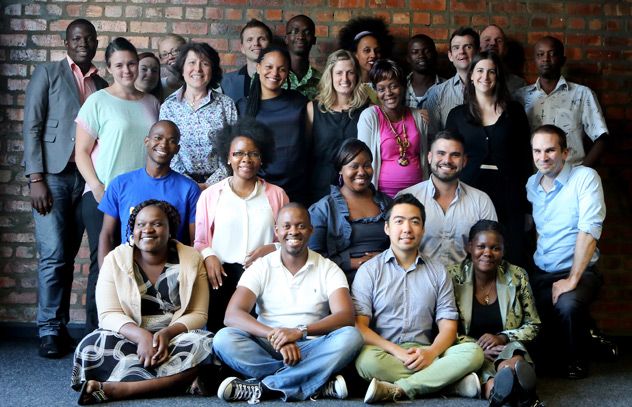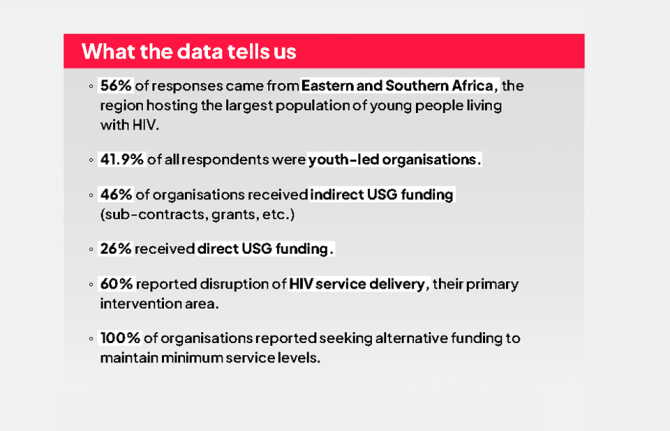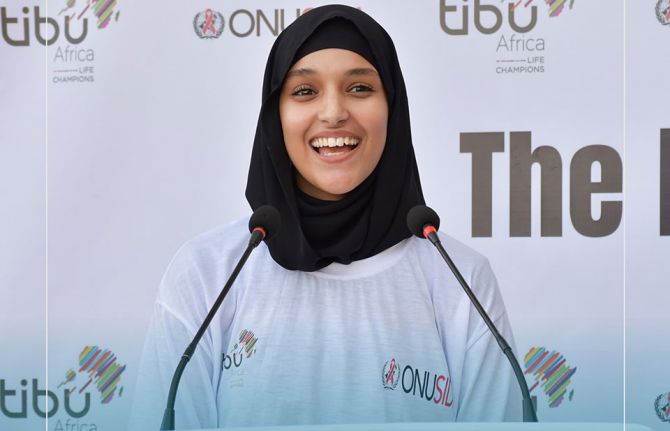

Participants on the meeting to scale-up access to optimal treatment and related care for adolescents living with HIV, Cape Town, South Africa. Credit: UNAIDS
Feature Story
Ensuring that adolescents living with HIV are not left behind
30 April 2014
30 April 2014 30 April 2014Despite the unprecedented progress made in the AIDS response in recent years, emerging evidence suggests that adolescents are falling behind as a result of not receiving the attention and services they require.
AIDS-related mortality among adolescents has increased by 50% over the past seven years, but fell for all other age groups, according to UNAIDS estimates. Two out of three people aged 0–14 lack access to HIV treatment worldwide, and recent data collected from sub-Saharan Africa indicate that only 10% of young men and 15% of young women (15–24 years) are aware of their HIV status.
To advance the adolescent treatment and care agenda, UNAIDS, the International Treatment Preparedness Coalition, the Global Network of People Living with HIV/AIDS (GNP+) and PACT brought together key treatment actors, United Nations and youth organizations and networks of young people living with HIV. During the two-day meeting, held on 16 and 17 April, participants analysed the main obstacles affecting adolescents in the AIDS response and charted an action agenda to ensure that adolescents are not left behind.
There is an urgent need to ensure that adolescents living with HIV become aware of their status and have access to effective HIV treatment and quality care programmes. Furthermore, adolescents face particular challenges to adhere to HIV treatment, lack support to disclose their status and there is an absence of information about their sexual and reproductive health and rights.
There are many reasons why adolescents may stop taking their HIV medications regularly, including their side-effects, “treatment fatigue”, self-stigma or a lack of community support. However, maintaining adherence to HIV treatment is one of the key elements for optimizing health outcomes for adolescents living with HIV. Besides its primary health benefits, taking antiretroviral treatment correctly and consistently delays the development of drug resistance and contributes to preventing the onward transmission of HIV.
“We cannot achieve zero AIDS-related deaths and zero new HIV infections if we don't focus on addressing the unique treatment needs of adolescents,” said Bactrin Killongo, from the International Treatment Preparedness Coalition. “For me, the agenda of scaling up HIV treatment should start with adolescents, especially those who were perinatally infected.”
Many adolescents living with HIV have also expressed lack of support regarding how, when and with whom to disclose their HIV status. This can lead to anxiety and depression. For members of young key populations, the situation is even more difficult, as they often face discrimination on account of the behaviour that makes then vulnerable to HIV, such as sex between men, as well as their HIV-positive status.
“Where do you go when you are discovering your sexuality as an adolescent? Very often the challenge that we face as young gay men is the double disclosure,” said Pablo Aguilera, Executive Director of the HIV Young Leaders Fund. “You have to tell people around you that you are HIV-positive and that you are gay, and this can get much more complicated when homosexuality is criminalized in your country and when you need the consent of your parents to access health care!”
Comprehensive sexuality education that is specifically catered to the unique needs of adolescents living with HIV is missing from most school and health-care settings globally. Many adolescents living with HIV are therefore left to deal with sexuality and relationships entirely on their own, leaving them isolated and fearful of sex and sexuality, while others lack sexual and reproductive health information and skills around safe sex.
“There is a need to tackle HIV prevention and treatment simultaneously and holistically among adolescents, recognizing not only their treatment and clinical needs but their emotional, physical and sexual needs too,” said Musah Lumumba, a young man living with HIV and Y+ member from Uganda.
Stigmatizing attitudes from health-care workers in relation to adolescents who are sexually active are also persistent. “As a young woman living with HIV, we often face challenges with access to sexual and reproductive health and services and adherence to HIV treatment, due to mistreatment and stigma from health-care workers,” said Consolata Opiyo, from the International Community of Women Living with HIV/AIDS.
A call to action
After two days of intense conversations, the participants identified core priorities to move the agenda forward, including developing a network to advance an agenda for adolescents to access medicines, demanding better treatment services at the country level, with a particular focus on national antiretroviral therapy guidelines and Global Fund to Fight AIDS, Tuberculosis and Malaria proposals, implementing a science agenda to fill the current research gaps regarding adolescents living with HIV and developing a mechanism to support the scaling up of programmes around adolescents living with HIV that work.
“This is a watershed moment in the AIDS response,” said Linda-Gail Bekker, Professor of Medicine and Deputy Director of the Desmond Tutu HIV Centre. “We now have a critical mass of organizations working jointly to advance the adolescent treatment and care agenda!”
The outcome document from the meeting will be available ahead of the World Health Assembly in May 2014.
Related
 “Who will protect our young people?”
“Who will protect our young people?”

02 June 2025


